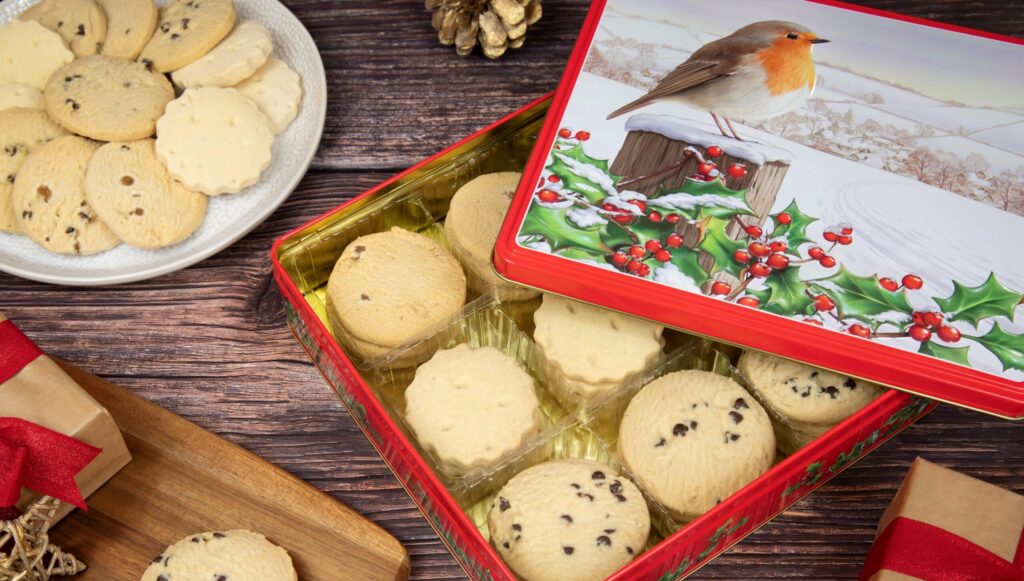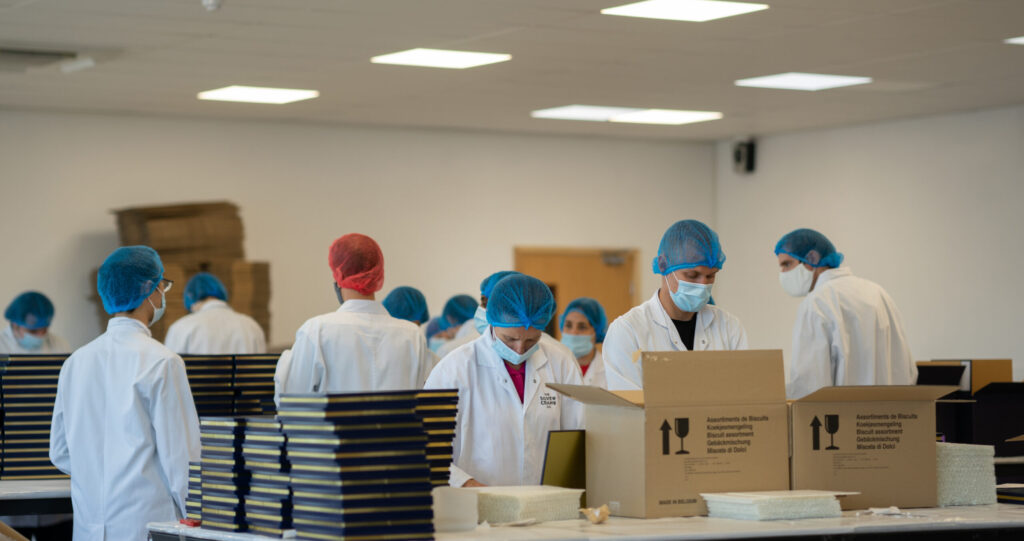Insights
Our Complete Guide To Launching A Food Product
Launching a new food product is an exciting but daunting challenge...
A successful food product launch requires careful planning across many different areas – from initial product development through to manufacturing, packaging and distribution. Whether you are an established retailer expanding an existing line or a start-up with a game-changing new concept, success depends on your research, planning and decision-making.
With over 45 years of experience in providing end-to-end food product solutions for global brands, we have an unrivalled understanding of what it takes to introduce a new food product to market. Below, we will outline the key steps involved in launching a food product, ensuring your concept translates seamlessly from an idea to a thriving commercial success.

Research & Planning
The current food product market presents unique opportunities and challenges for businesses looking to introduce new concepts. Before you dive into product development, there are many different broader market factors you must consider. It can be tempting to rush into production, but taking the time to analyse market trends, consumer demand, and competitive positioning will significantly improve your chances of success. What are the key factors that you must consider? We have included a breakdown of the most important factors below:
- Consumer Demand & Trends – identify what consumers are actively seeking. Will your product be heavily influenced by seasonality or will there be demand all year round?
- Competitive Landscape – research existing products in your niche to understand how your offering can stand out and fill a market gap. If you can’t differentiate, you need to innovate!
- Retail & Distribution Channels – decide whether your product is best suited for supermarkets, independent retailers, e-commerce, or direct-to-consumer models. Consider using a mix of different distribution channels.
- Regulatory & Compliance – ensure your product adheres to local food safety regulations, nutritional labelling laws, and packaging standards. Different regions have different regulatory requirements, so conduct thorough research for all markets you will be targeting.
- Pricing & Profitability – strike the right balance between affordability and profit margins, considering production costs, retailer markups, and consumer expectations. Broader economic factors may impact consumer spending potential.
- Supply Chain & Sourcing – assess the reliability and scalability of your suppliers and manufacturers. If supply can’t meet demand, you will end up in a difficult position.
- Visual Appeal & Packaging – your packaging must not only comply with regulations but also attract attention and communicate your brand effectively. If your packaging is lifeless, your sales will be as well.
If you take the time to conduct thorough research into all of the areas we have highlighted above, you will gain a much better understanding of the opportunities and possible stumbling blocks for your new food product. Don’t proceed with a product if you aren’t satisfied after your market research. You are much better off going back to the drawing board and changing strategy than throwing money at an idea that has flaws from the outset.

Developing Your Food Product
Once you are fully satisfied with your research and are confident in the potential your product brings, it is time to begin the product development process. For start-ups and new concepts, this is where many ideas can lose traction, so it is important to stay motivated and maintain belief in the product you want to bring to market. Strong research will help with this. For established retailers, this stage is about refining and scaling your concept to ensure consistency, quality, and efficiency in production.
Recipe & Scalability
Creating a recipe that works on a small scale is one thing, but ensuring it can be consistently replicated in large production runs is another challenge entirely. No matter the scale of production, your food product must retain the same taste, texture, and quality. Naturally, the recipe may not be identical when prepared in a small batch versus at production level, but the difference must be nearly indistinguishable, otherwise, you may lose your competitive edge.
Recipe Development Considerations
- Taste Development – refine your recipe through multiple iterations and taste tests. If your food product doesn’t fundamentally taste good, it will not be a success. Consider factors such as flavour intensity, texture and aftertaste. Consumer feedback during this phase is invaluable – what tastes perfect to you may not appeal to your target market. Taste, test, refine, repeat.
- Ingredient Selection – source ingredients that align with your product positioning. If you are targeting a luxury market, high-quality ingredients are obviously essential. If your product would be considered a budget-friendly option, make sure your ingredient choices reflect your intended market positioning.
- Production Scalability – ensure your recipe works effectively at commercial volumes. The preparation and cooking process must be scalable to meet increased demand. Work with specialist consultants and focus groups to ensure the final product delivers a consistent taste and texture.
- Preservation & Shelf Life – conduct stability and shelf-life testing to determine how long your product remains fresh and safe for consumption. Recommended storage conditions can impact shelf life, so consider this for labelling purposes.
- Nutritional Profile – if making specific health claims such as being low sugar or high protein, ensure this is backed by science – nutritional analysis. This information will be essential for product labelling and marketing.
Food Safety & Compliance
Ensuring your product meets all food safety and regulatory standards is non-negotiable. It’s essential to ensure compliance at every stage of the development process. Food safety is critical not only for consumer well-being but also to avoid serious legal issues later down the line. Strict adherence to hygiene protocols, contamination prevention, and allergen control are vital. Be sure to check what regulatory bodies your product must comply with, as food safety regulations vary depending on the market you are targeting. In the UK, you will need to adhere to Food Standards Agency (FSA) regulations, while international markets may require compliance with organisations such as the European Food Safety Authority (EFSA) or the Food and Drug Administration (FDA) for the United States.
It isn’t necessarily the most exciting phase when launching a new food product, but it is arguably the most important. It can be a matter of life and death if you do not pay care and attention to your target region’s food and safety regulations. Make sure you take every precaution to help keep your consumers safe.
Partnering with the Right Manufacturer
Choosing the right manufacturing partner is essential when launching a food product. You need a partner who can match your expectations in terms of product quality, production efficiency, and scalability. Whether you opt for contract manufacturing or setting up your own production facility, you need to ensure that your product can be consistently produced at the right quality and volume. Once you have established a shortlist of potential manufacturers, here are a few key factors to consider when making the final decision:
- Capability – confirm they have the necessary equipment and expertise for your product’s specific processing and packaging requirements.
- Scalability – ensure your food product manufacturer can meet the current and future demands, growing with your business.
- Quality Control – research the quality assurance processes of your potential manufacturers. Make sure your chosen manufacturer will deliver your new food product consistently at scale.

White Label Food Product Solutions
One popular solution for new food product launches is opting for a white-label solution. This means working with a manufacturer that produces high-quality, ready-made products, which can then be branded and customised to fit your business needs. At Silver Crane, we provide complete product solutions, sourcing the most delicious fills as trusted private label food and snack suppliers. We are specialist white label confectionery and biscuit suppliers, supporting global brands in bringing new products to market.
If you need an end-to-end solution, we can help design and manufacture tin packaging for your new product, as well as sourcing delicious fills. Get in touch with our team to find out more.
Packaging Your Food Product for Success
Packaging has never been more important when launching a new food product. It plays a crucial role in both protecting your product but also in elevating the profile of your brand. It is now a core part of building a relationship between a brand and the end user – in some cases, long after the sale has been made. Tin is fast becoming one of the most popular choices for packaging new product launches.
As the best sustainable packaging material, tin strikes the perfect balance between visual appeal and durability. Tin packaging is also infinitely recyclable. There are other packaging options you can consider when launching a new food product, but tin offers superior durability, visual appeal and sustainability, whilst also maintaining product freshness. We would recommend evaluating the following factors before finalising your packaging decisions:
- Functionality – does the packaging keep the product fresh? Is it easy for the consumer to access?
- Sustainability – consumers are increasingly drawn to eco-friendly packaging solutions. Consider recyclable, reusable, or biodegradable options such as tin.
- Branding & Shelf Appeal – your packaging should communicate your brand identity effectively, using high-quality design and printing techniques.
- Retail & Logistics Suitability – packaging should be optimised for transport, storage, and display on retail shelves.
Silver Crane is a world leader in tin manufacturing and design. Our packaging solutions are tailored to elevate your brand and ensure compliance with industry standards. If you are a global brand launching a new food product line, we can support you with our award-winning tin packaging design and manufacturing services. Contact our team.

Managing Logistics For A Successful Food Product Launch
Once your product is developed and packaged, you must ensure that your new food product reaches the market efficiently and reliably. This is where logistics and supply chain management play a crucial role. From warehousing to distribution, every step must be carefully coordinated to avoid costly delays, stock shortages and product waste. When developing your logistics strategy, several important factors require consideration and planning:
- Production Scheduling – plan your manufacturing timelines with forecast demand to avoid under or over-production. Both can be costly to your new food product launch.
- Warehousing & Storage – you will need sufficient space to pack and store your new food product. Ensure your partner can meet these demands.
- Distribution Strategy – select the right partners for your shipping requirements, whether that’s working with wholesalers, distributors or direct-to-consumer channels.
- Regulatory & Customs Compliance – if your food product will be exported overseas, ensure all international regulations are met to avoid delays and fines.
The Silver Crane Company can help you with manufacturing and logistics. Not only do we create innovative tins and source delicious fills, but we are proud to offer an end-to-end service, providing our customers with packed shelf-ready products from our BRC-approved sites. Find out more about our warehouse and distribution expertise.

Taking Your Food Product to Market
Now that your product is ready to launch, the next challenge is creating a marketing and sales strategy that ensures visibility, demand, and long-term success. Your marketing strategy must be unique to your product. This is another stage where your market research is essential. If you have a strong fundamental understanding of your target audience and competitive landscape, you will already have a good idea of what channels you need to prioritise when it comes to marketing your new food product.
Before you promote your new food product via different marketing channels, you need to ensure that your brand strategy and messaging are solid. Strong branding and clear messaging will help your product stand out on shelves and online, whilst engaging with your target audience through social media, influencer partnerships, and paid advertising will help build awareness. Retail and distribution relationships are also vital when introducing a new food product. They can be your product’s biggest advocate, ensuring that you are at the forefront of their customers’ physical or digital shopping experience. Negotiate promotional opportunities to boost initial sales and brand awareness.
Summary
It is no easy task to launch a new food product. Careful planning and research are required at every stage. If you follow the advice laid out in this comprehensive guide, you will stand the best chance for a successful food product launch. We can support you beyond the advice outlined in this article, so why not take the next step?
At Silver Crane, we understand what it takes to bring a new food product to market successfully. Whether you’re a start-up with an innovative concept or an established retailer launching a new product line, our expertise in design, manufacturing, packaging, and logistics can help bring your vision to life. Get in touch with our team today to find out how we can support your project.
Contact Us
Say hello
Let us create the solution you need! Get in touch.